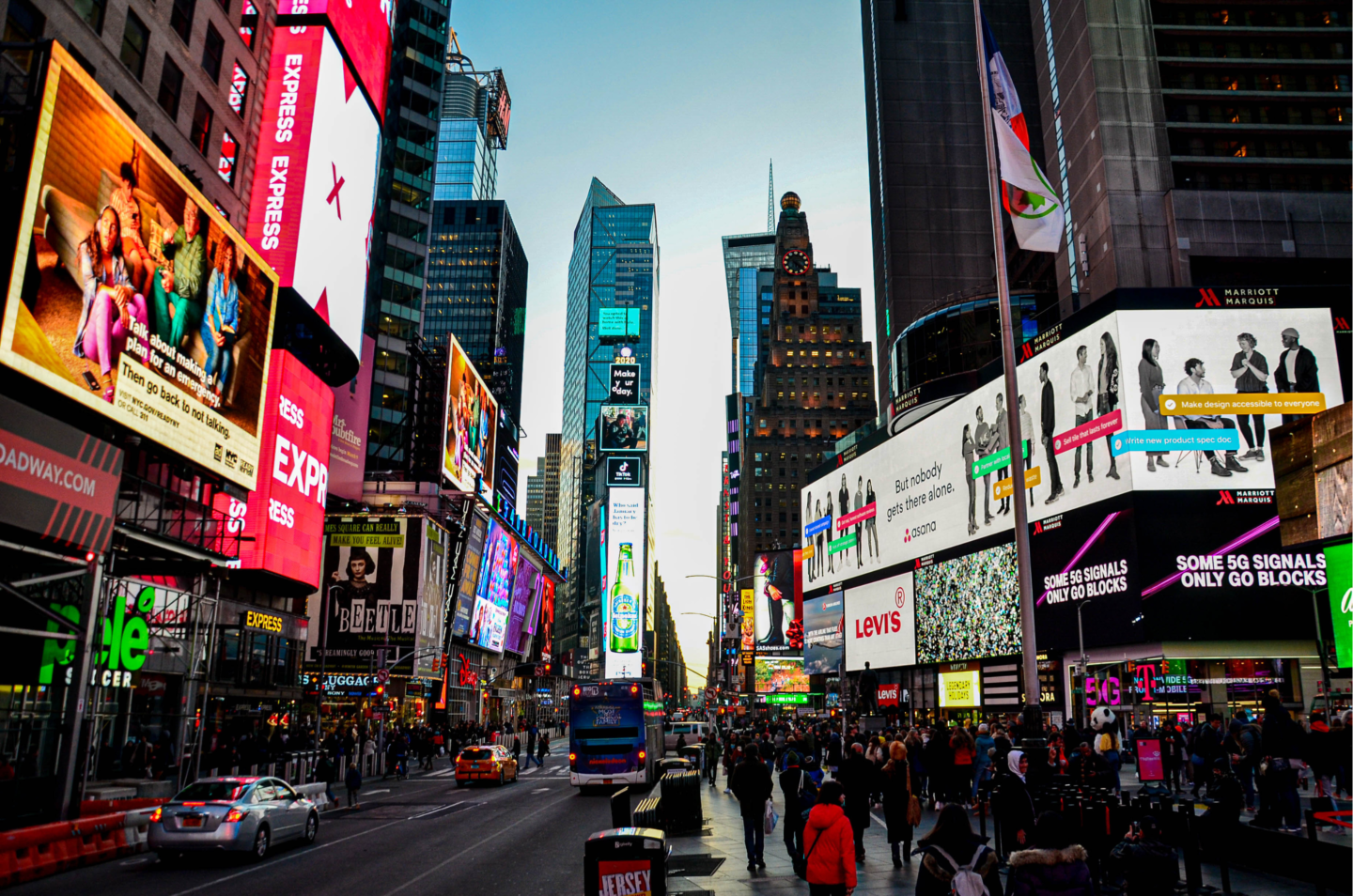Over the past few years, Artificial Intelligence (AI) has grown to be a key asset for businesses. We have seen several unique use cases, ranging from Lowe’s “Lowbot” which provides tailored information to shoppers in-store, to Netflix’s AI-driven machine learning technology to give personalized recommendations on new content for viewing. Consumers use this technology daily, whether voice recognition, chatbots, virtual assistants, digital maps/navigation, or even on social media.
As consumers continue to explore the world of AI, so are advertisers. AI is no longer perceived as a novelty tool, but rather an up-and-coming technology that will be necessary for marketers to maintain efficiency in their processes. According to a Salesforce report, 62% of marketing organizations say they already use AI. And by 2028, the market for AI in marketing is expected to reach $107.5 billion. This goes to show – artificial intelligence growth has no intention of slowing down.
What are the benefits of using AI in Marketing?
Automation
Automate repetitive tasks, such as data entry and analysis, allowing marketers to focus on more complex and creative tasks.
Improved decision-making
AI can help identify patterns and insights in data that humans might miss, leading to better decision-making in areas such as finance, healthcare, and marketing.
Efficiency
AI can process large amounts of data quickly and accurately, making it useful for tasks such as image and speech recognition, natural language processing, and decision-making. With higher lead generation and productivity, advertisers may see greater cost savings.
Personalization
Advertisers can create personalized experiences, such as recommending products or content, based on an individual’s preferences and behavior. Advertisers can then better meet consumers at all stages of their buying journey.
What are the different types of AI used in Marketing?
There are several types of AI; here are the two typically used across advertising:
Predictive AI
This type refers to artificial intelligence systems that use statistical models, machine learning algorithms, and data-driven approaches to make predictions about future outcomes based on historical data. Predictive AI predicts future events or outcomes based on historical data.
Generative AI
The second type refers to artificial intelligence systems that generate new content or outputs based on a given set of input data. Generative AI uses machine learning algorithms and deep learning techniques to create new outputs, such as text, images, music, or videos, that are similar to a given training data set. Generative AI models can be used for tasks such as image generation, text generation, and anomaly detection.
Recently, the buzz around AI has been focused on a particular platform: ChatGPT.
What is ChatGPT?
ChatGPT is a generative artificial intelligence application, created by Open AI. According to USAToday, ChatGPT is an AI computer program that uses its intelligence to intake, comprehend and produce a response that mimics the natural diction of human language. In recent months, people have used the chatbot to help fill out job applications, write resumes, respond to emails, and more (most people use it to generate ideas – so do marketers!)
Since its release in November of 2022, ChatGPT has quickly become one of the fastest-growing applications, gaining over 100 million users within its first two months of release. While AI is no stranger to the advertising world, ChatGPT has definitely made a splash in how this technology will be used in businesses.
How is ChatGPT impacting the field of advertising/marketing?
- Marketers have the option to quickly generate ideas and help streamline content creation.
- Data can be analyzed at a rapid pace, giving advertisers more insights into their consumers to better serve them.
- Marketers can easily stay on top of trends in their target audience and modify campaigns accordingly.
- ChatGPT can help automate customer service, helping to increase engagements by providing personalized answers to inquiries.
There is no denying that ChatGPT and other forms of AI provide benefits to advertisers. However, when AI is paired with the human element of creativity, decision-making, and strategy, that is where campaigns will see the most success.
How you can use AI in digital advertising
Whether you are a marketer working on your next newsletter or an advertiser seeking to run your next campaign, below are a few creative ways to use artificial intelligence in digital advertising and marketing.
1. Content Ideation
We’ve all experienced so-called “Writer’s Block.” When the ideas aren’t flowing, it can be difficult to start. This is where generative platforms like ChatGPT shine, allowing the user to provide a prompt and generate a well-written response based on millions of sources from the web. Whether you are looking to brainstorm ideas for a new campaign or write a catchy email subject line, generative AI can help streamline the process.
2. Enhanced Chatbot
Let’s think about when a Chatbot doesn’t work, and how frustrating that can be on the consumer end. With an advanced Chatbot, consumers can easily get answers to their questions on a brand’s website and receive an elevated brand experience – all while the brand simultaneously gathers this data to glean consumer insights. Quick, personalized answers may also increase customer engagement and satisfaction.
3. Optimizing Ad Campaigns
Harnessing data is essential before, during, and after a campaign runs. With the use of predictive AI, advertisers can identify new targeting segments, deliver ads at optimal rates while also focusing on the campaign goal, and generate insights for future campaigns such as audience behaviors.
How Digilant uses machine learning and AI
At Digilant, we leverage machine learning AI through our data and DSP partnerships to optimize campaign performance.
Here are a few examples:
1. Search
If a consumer makes a search on Google for a new pair of sunglasses, Google can use its machine learning algorithms to target ads based on these searches, and the consumer is then served an ad. Additionally, the consumer can also receive sunglasses ads on other websites.
2. Social Media
Social media networks use machine learning to target ads to specific people based on interest, engagements, and who they follow.
3. Amazon
Amazon uses machine learning to target ads based on what people have recently bought or searched. This insight then allows them to target that user with similar or complementary products.
At Digilant, we understand the complexities that correspond with digital advertising. While artificial intelligence and machine learning have boosted advertising efforts, there are still advancements to be made, and we are constantly learning and testing new ways to use these tools? Contact us today to learn more.





